- S.D. Eibar ready for maiden La Liga outing
- SD Eibar stengthen ahead of debut La Liga season
- Can ‘Super Mario’ live up to expectations in Madrid?
- MAN IN THE GROUND – Brentford 0 – 4 Osasuna
- Historic Basque derby welcomes S.D. Eibar to La Liga
- Munich to Madrid, via Brazil – Tony Kroos
- Rakitic in Spanish Switch
- Can Spain find redemption in Rio?
- Viva Espana! A season of redemption for Spanish football
- From the old to the new: who can fill the void in years to come for La Roja?
Farewell to Bilbao’s Cathedral of Football
- Updated: 12 June, 2012
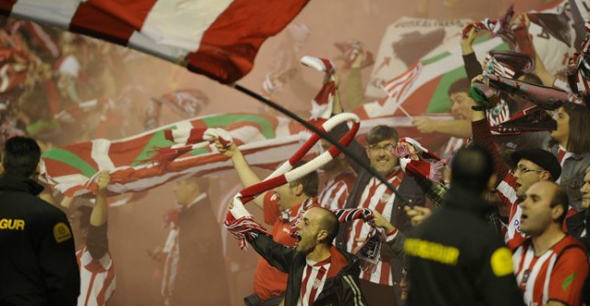
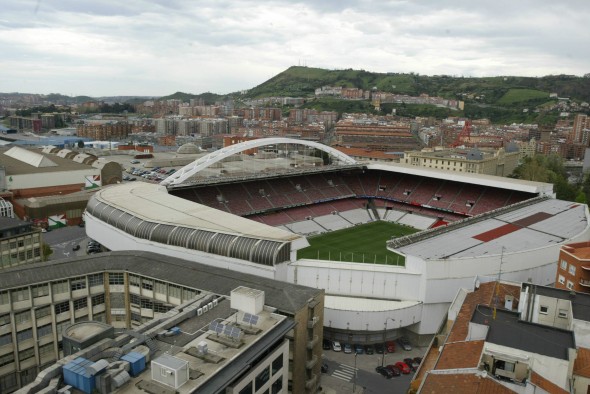
With Athletic Bilbao set to pack up and move to their new stadium – which has rather fittingly been built next door – Chris Clements says a final look at the history of the iconic San Mames stadium.
Maybe it is the language or the region’s political aspirations. Could it be the club’s strictly Basque only policy? Whatever it is, the followers of Athletic Club de Bilbao generate a fervour that is unequalled throughout the whole of Spain.
At the centre of that intensity is the fans place of worship, the magnificent San Mamés Stadium. So it seems only appropriate that the stadium also goes by the name of La Catedral. Bilbao was one of the first cities in Spain to witness football, when in the early 1890’s British workers, in the city during its industrial expansion, played local students.
Two early pioneers, Athletic Club and Bilbao FC joined forces in June 1901 to form Vizcaya Athletic Club. During the first decade of the 20th century, the club played at grounds in the northern suburb of Getxo and the southern district of Leioa.
In 1911 Athletic decided to build a new ground and chose fields at the end of the Gran Via, close to the site of a former hermitage where the saint and martyr Mammes de Cesarea was venerated, hence San Mamés. At a cost of 89,000 pesetas, it was the first major, purpose built stadium in Spain. It featured a magnificently ornate red & white wooden stand that sat atop a grass bank. In front was a narrow strip of terracing, either end of which were flower beds. Opposite the main stand was a crescent shaped wedge of terracing, a shape that the current east stand still follows.
The 10,000 capacity was completed by thin strips of terracing behind each goal. It took seven months in total to build and saw its first match on 21 August 1913 when Cup-holders Racing de Irun was held to a 1-1 draw. Fittingly, Rafael Moreno or “Pichichi” who is probably the club’s most famous and certainly most iconic player, scored the first goal at the stadium.
Pichichi, whose goals had propelled Athletic to the
top of the Spanish game, tragically died in 1922 and four years later the club erected a bust of the great striker at the back of the north terrace.
It became a tradition for clubs making their first visit to the stadium, to lay a bouquet at the foot of the bust. It is now housed in the President’s box and the tradition of visiting teams placing flowers at its base continues.
Little changed at San Mamés until the early 1950’s when, under pressure to increase income the club opted to rebuild. The fields that had surrounded the stadium had long been swallowed up by Bilbao’s urban sprawl making it impossible to redevelop beyond the original site.
So, Athletic focussed on transforming their main stand and went for a form of roof construction that was new to stadium design – a giant arch. Work began in February 1952 and took just over a year to complete.
The San Mamés arch quickly became a popular image in Spanish football, while on match days the supporting corner blocks, which featured balconies, would be crammed with supporters – a sort of 1950’s private box!
In the early 1960’s work commenced on the north and south ends of the ground. Each featured a two-tiered stand, the roofs of which were supported by props.
The stands were irregularly shaped due to the surrounding streets and were linked to the new east stand in the early 1970’s. Again, this was a double-deck stand with a supported flat roof. With little room remaining, floodlights had to be mounted on squat gantries atop of three roof corners and along the roof of the new east stand.
San Mamés was now totally enclosed and a veritable lion’s den, which considering that St. Mammes had been thrown to the lions, seemed entirely appropriate.
The 1982 World Cup brought further redevelopment that would see the main stand link up with two new double-decker stands at either end. Athletic were adamant that the arch should remain, but since it was held up by the huge corner blocks, another way of supporting the arch had to be found before the blocks and their balconies were demolished.
The conundrum was resolved with a brilliant piece of engineering. First, cantilevered brackets were inserted into the back of the stand underneath each end of the arch.
Then, as massive cranes took the whole weight of the arch and the roof, the corner blocks were demolished. The new brackets were then edged into position to accept the weight of the arch and its roof.
When the process was complete and the arch was resting on its new supports, the whole structure had shifted only 5mm. Whilst the main stand was undergoing major surgery, work continued on the north and south stands. These were basically cantilevered versions of the earlier structures, but with more seating and brighter.
The east stand got a new roof and seating was installed in the lower tier. The original stumpy floodlight gantries were removed and new floodlights were installed along the roofs of the main and east stand.
The new San Mamés had a raised capacity of 46,000, of which 36,000 were seated, but it came at cost of 1,100 million pesetas.
What of San Mamés? Well, apart from a conversion to an all-seat arena in 1997, it remains unchanged from its World Cup rebuild.
However, in 2006 the club announced plans to build a new stadium on land between the Rio Nevrion and the back of the west stand.
Alas the new 55,000 capacity stadium will not feature an arch and from the plans, does look rather formulaic.
Due to open in 2015, it will initially be called San Mamés Barria and whilst it may not have the distinctive features of the old stadium, Athletic can count on one thing. The club’s fanatical supporters will remain defenders of the faith at the new cathedral.
Follow @icentrocampista

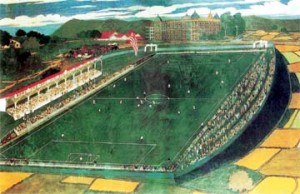
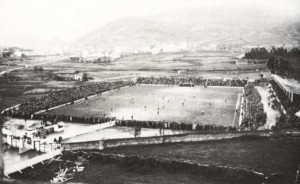
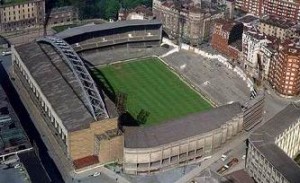
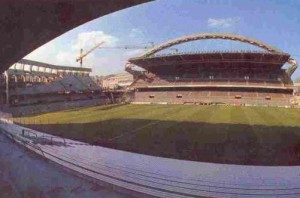
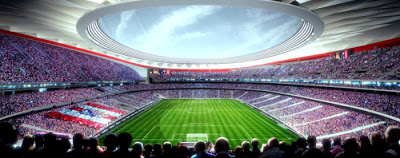

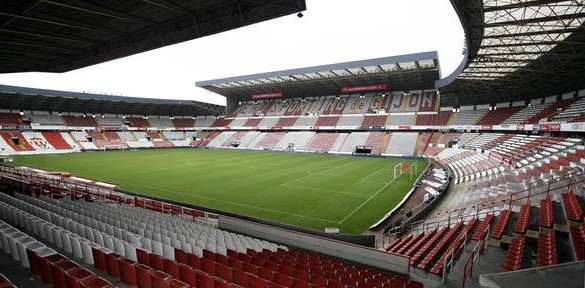


One Comment
You must be logged in to post a comment Login